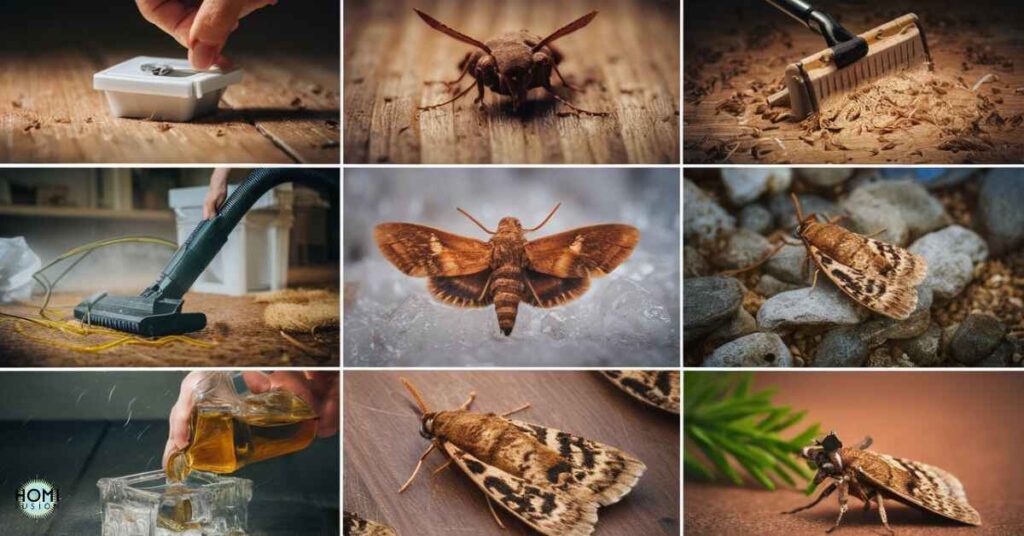Those pesky brown house moths can be a real nuisance, invading your home and damaging your precious belongings. Don’t let them ruin your peace of mind-we’ve got the ultimate guide to help you get rid of these unwanted guests for good.
Understanding the life cycle and habits of brown house moths is crucial in effectively eliminating them from your home. Let’s dive into the details and explore various methods to bid farewell to these persistent pests.
Identifying Brown House Moths and Their Destructive Nature
Before we delve into elimination strategies, it’s essential to recognize the signs of a brown house moth infestation. These sneaky pests can wreak havoc on your household items if left unchecked.
Appearance and Characteristics of Brown House Moths
Brown house moths, also known as pantry moths or cupboard moths, are small flying insects with a wingspan of around 12-16mm. As their name suggests, they have a distinct brown coloration, often with darker spots or patterns on their wings.
Signs of an Infestation
Holes in Fabrics: If you notice tiny holes or irregular patterns of damage in your clothes, carpets, or upholstered furniture, it could be a telltale sign of brown house moth larvae feeding on the fibers.
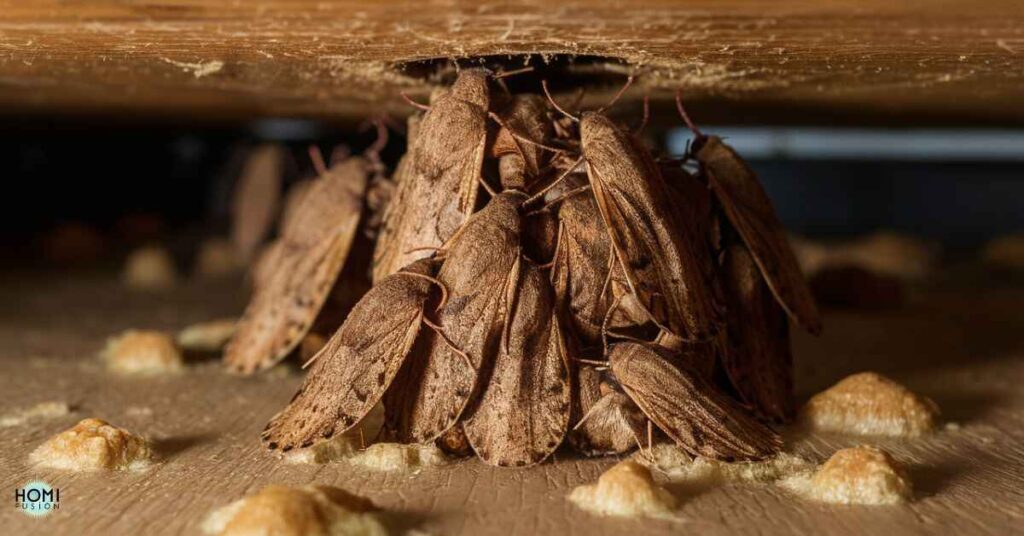
Moth Larvae: The larvae (caterpillars) of brown house moths are small, cream-colored with dark heads, and can be found in corners, crevices, or near infested areas.
Webbing or Cocoons: You may also spot silken webbing or cocoon-like structures in areas where the larvae have been active.
Why They’re a Problem
Brown house moths are more than just a nuisance – they can cause significant damage to your household items. Their larvae feed on natural fibers like wool, silk, cotton and even stored food products, leaving holes and irregular patterns of damage in their wake. An infestation left untreated can lead to costly repairs or replacements of your belongings.
Prevention is Key: Tips to Discourage Brown House Moths
The old adage “prevention is better than cure” rings true when it comes to dealing with brown house moths. By implementing a few simple preventive measures, you can significantly reduce the risk of an infestation in your home.
Vacuum Regularly and Thoroughly: Vacuuming is your first line of defense against brown house moths. Make sure to vacuum carpets, upholstered furniture, and other areas where these pests may lurk. Pay close attention to crevices and hard-to-reach spots.
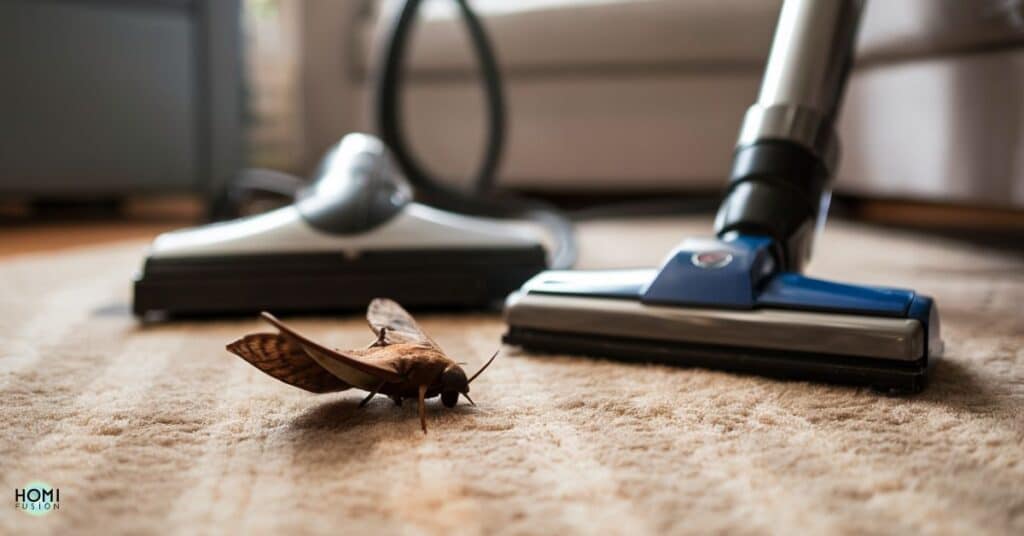
Store Clothing and Fabrics Properly: Brown house moths love to feast on natural fibers like wool, silk, and cotton. Store your clothing and fabrics in airtight containers or cedar chests to prevent moth access.
Keep Pantry Items Sealed and Organized: These moths can also infest food products like grains, cereals, and dried goods. Store pantry items in airtight containers or resealable bags, and regularly rotate your stock to prevent infestations.
Reduce Clutter and Maintain a Clean Living Space: Clutter and dirt provide ideal hiding spots for brown house moths and their larvae. Keep your home clean and decluttered to eliminate potential breeding grounds.
Natural Repellents to Keep Brown House Moths at Bay
In addition to preventive measures, you can also incorporate natural repellents into your home to discourage brown house moths. Here are some effective options:
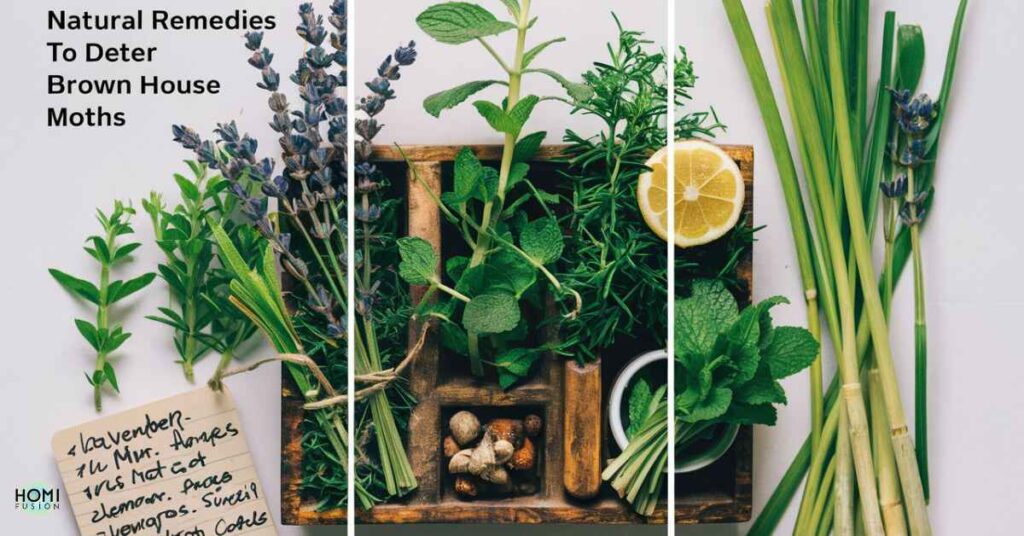
Essential Oils: Certain essential oils, such as lavender, peppermint and clove, are known to deter moths. You can create a DIY moth repellent spray or sachets using these oils.
Herbs and Spices: Herbs like bay leaves, rosemary and cloves can also help keep moths away when placed in closets, drawers, or pantry areas.
Cedar: The distinct aroma of cedar is a natural moth repellent. Cedar chips, balls or blocks can be used in closets, wardrobes, and storage areas.
Remember, while these natural repellents can be effective deterrents, they should be used in conjunction with other preventive and elimination methods for optimal results.
Read this blog:
Can Fleas Travel On Humans To Another House?
Effective Methods for Eliminating Brown House Moths
If you’ve already detected signs of a brown house moth infestation, it’s time to take action. Here are some effective methods for eliminating these pests from your home:
Using Pheromone Traps and Monitoring Devices:
Pheromone Traps: These traps use synthetic pheromones to lure and trap male brown house moths, disrupting their mating cycle and helping to control the population.
Monitoring Devices: Sticky traps or pheromone-based monitoring devices can help you detect and monitor moth activity, allowing you to identify infested areas and track the effectiveness of your control methods.
Insecticide Sprays and Powders:
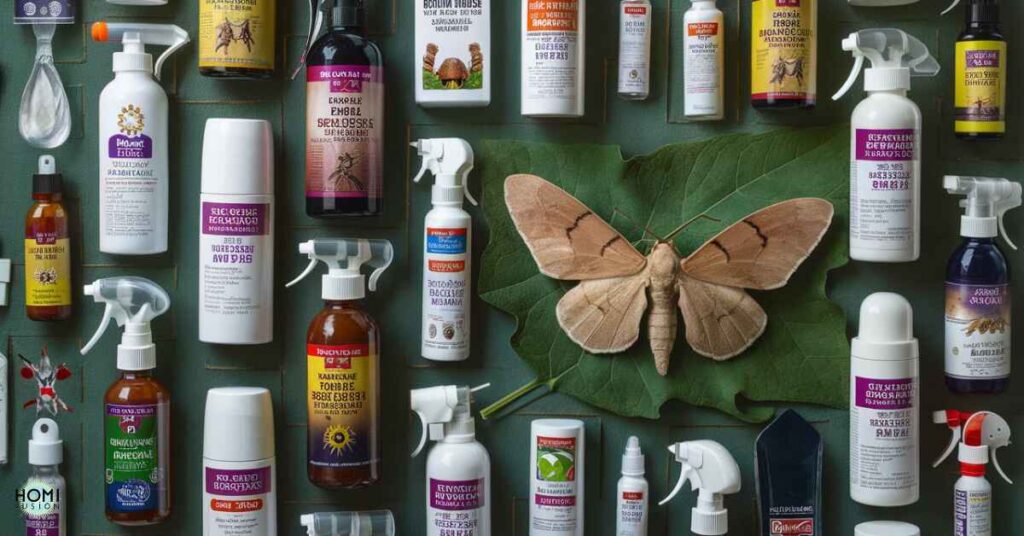
Residual Sprays: Insecticide sprays containing ingredients like pyrethrins or pyriproxyfen can be effective in killing adult moths and larvae when applied to infested areas.
Insecticidal Powders: Powders like diatomaceous earth or boric acid can be used in hard-to-reach areas or as a preventive measure in stored food products.
Caution: Always read and follow the label instructions carefully when using insecticides, and take necessary safety precautions.
Freezing or Heat Treatment for Infested Items:
Freezing: Placing infested items in a freezer for several days can kill all life stages of brown house moths, including eggs and larvae.
Heat Treatment: Exposing infested items to high temperatures (around 120°F or higher) for several hours can also effectively eliminate moth infestations.
Professional Pest Control Services:
When to Seek Help: If the infestation is severe or you’re unable to control it using DIY methods, it may be time to call in professional pest control services.
Integrated Pest Management (IPM): Reputable pest control companies often employ an IPM approach, combining various techniques like monitoring, sanitation and targeted treatments for effective moth control.
DIY Solutions vs. Professional Pest Control: Weighing the Options
Deciding between DIY methods or seeking professional pest control services often comes down to the severity of the infestation, your budget, and personal preferences. Here are some factors to consider:
DIY Solutions:
Cost-effective: DIY methods like traps, repellents, and household treatments can be more budget-friendly.
Flexibility: You can implement DIY solutions at your own pace and convenience.
Limitations: Severe or widespread infestations may be challenging to control with DIY methods alone.
Professional Pest Control:
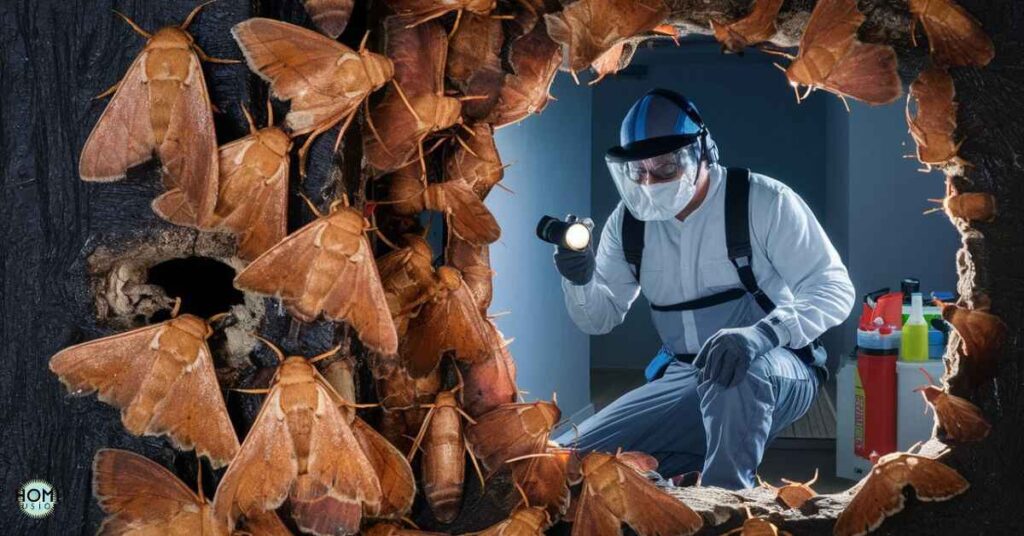
Expertise: Professionals have the knowledge, experience and specialized equipment to effectively tackle moth infestations.
Comprehensive Approach: They can implement an integrated pest management (IPM) strategy tailored to your specific situation.
Cost: Professional services can be more expensive, but they may provide long-term solutions and peace of mind.
Ultimately, the decision should be based on the extent of the infestation, your comfort level with DIY methods, and your budget.
Protecting Your Home from Future Infestations
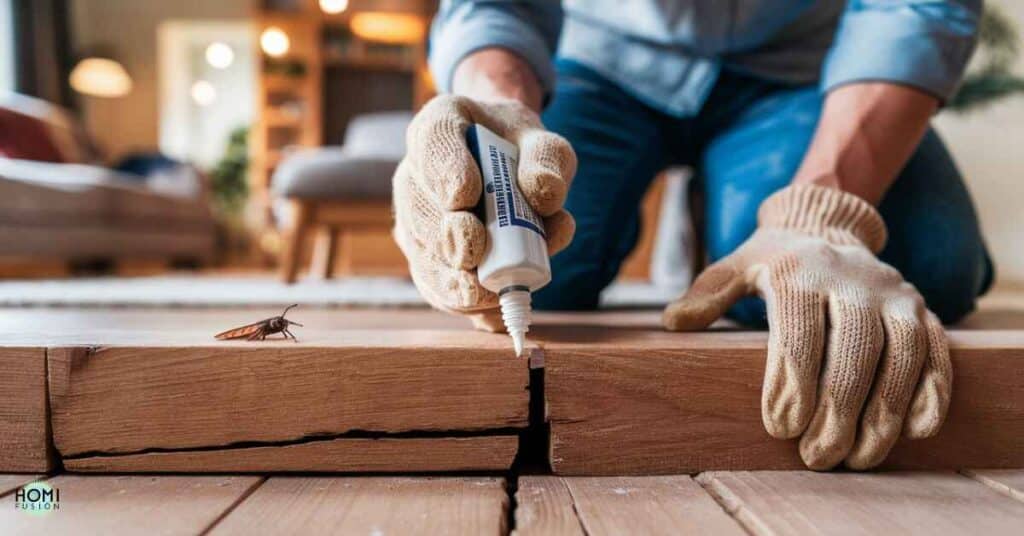
Once you’ve successfully eliminated the brown house moth infestation, it’s essential to take preventive measures to avoid future infestations. Here are some tips to help you maintain a moth-free home:
Seal Cracks and Entry Points: Brown house moths can enter your home through cracks, crevices, and other small openings. Seal any potential entry points using caulk or other appropriate materials.
Routine Cleaning and Inspection: Regularly clean and inspect areas prone to moth infestations, such as pantries, closets, and carpeted areas. Look for signs of moth activity, including larvae, webbing or damage to fabrics or stored food products.
Use Moth-Proof Storage Containers: Invest in airtight containers or storage bags specifically designed to protect against moth infestations. These containers can help safeguard your clothing, fabrics, and stored food items.
Monitor for Early Signs of a New Infestation: Stay vigilant and regularly check for signs of a new infestation, such as adult moths, larvae or moth damage. Early detection can help you address the problem before it escalates.
Common Myths and Misconceptions About Brown House Moths
Myth: “Brown house moths only infest dirty homes.”
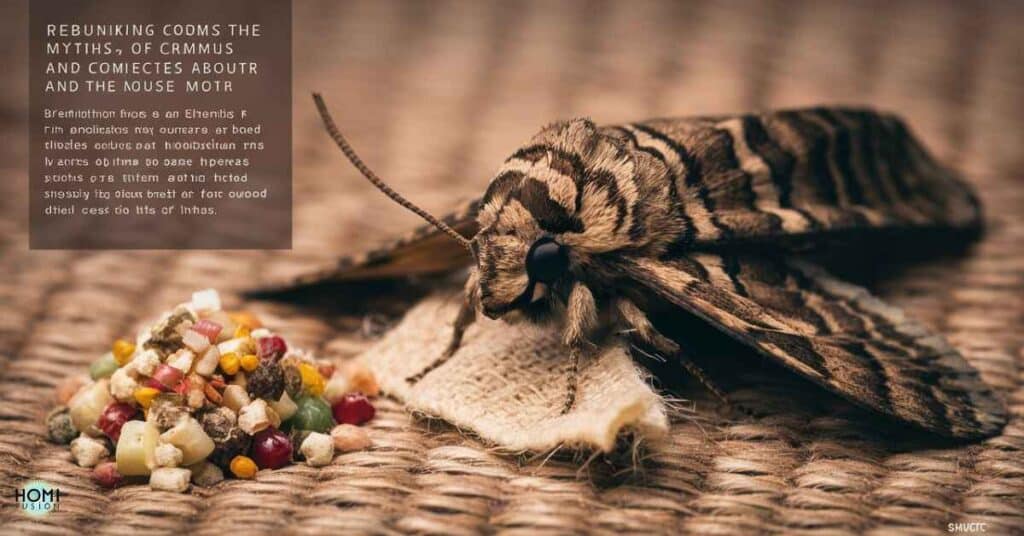
Reality: While cleanliness can help discourage infestations, brown house moths can invade even the cleanest of homes. These pests are attracted to natural fibers and food sources, not necessarily dirt or clutter.
Myth: “Mothballs are the only effective way to get rid of brown house moths.”
Reality: While mothballs can be used as a deterrent, they are not a complete solution for eliminating an existing infestation. A combination of methods, including traps, insecticides, and proper cleaning, is often necessary for effective moth control.
Myth: “Brown house moths only infest clothes and fabrics.”
Reality: In addition to clothing and fabrics, brown house moths can also infest stored food products like grains, cereals, and dried goods, making them a threat to your pantry as well.
Myth: “Once you get rid of the adult moths, the problem is solved.”
Reality: Adult moths are just one stage of the life cycle. Eggs and larvae can persist, leading to a recurring infestation if not addressed properly. A comprehensive approach targeting all life stages is essential for complete elimination.
By debunking these myths and understanding the true nature of brown house moths, you’ll be better equipped to tackle an infestation effectively.
Read this blog:
What Attracts Beetles In Your House
Ready to Bid Farewell to Brown House Moths?
If you’re ready to take action and reclaim your home from brown house moths, refer to the effective methods and tips outlined in this guide. Remember, early detection and a proactive approach are key to preventing a full-blown infestation.
Don’t hesitate to reach out to professional pest control services if the infestation seems overwhelming or persists despite your efforts. Sometimes, seeking expert assistance can save you time, money, and frustration in the long run.
Take control of your home today and say goodbye to those unwanted brown house moth guests for good.
Frequently asked questions
How to get rid of moths permanently?
To get rid of moths permanently, use a combination of moth traps, regular cleaning, and sealing off entry points.
How do I get rid of moths in my room ASAP?
To quickly eliminate moths in your room, use moth repellents like cedar or lavender sachets and vacuum thoroughly.
Does vinegar get rid of moths?
Yes, vinegar can help get rid of moths as it disrupts their pheromone trails.
What kills moths and their eggs?
To kill moths and their eggs, wash affected fabrics in hot water or freeze them for several days.
Conclusion
Dealing with a brown house moth infestation can be frustrating. However, with the right knowledge and techniques, you can take back control of your home. Remember, prevention is key and a combination of methods may be necessary for complete elimination.
Start by identifying the signs of an infestation and implementing preventive measures to discourage these pests from taking hold. If an infestation does occur, explore effective methods like pheromone traps, insecticides, freezing, or heat treatments. Alternatively, seek professional pest control services for severe cases.
Once the infestation is under control, protect your home from future infestations by sealing entry points and maintaining cleanliness. Use moth-proof storage containers and monitor for early signs of new activity as well. Don’t let brown house moths ruin your belongings or your peace of mind. By following this comprehensive guide, you can bid farewell to these pesky pests and enjoy a moth-free, worry-free living space.

